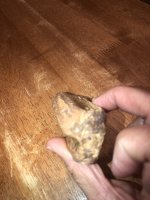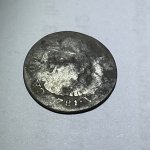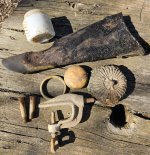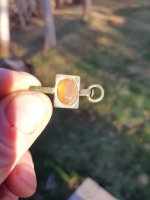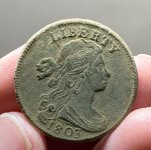ashurjames
Greenie
- Oct 12, 2014
- 10
- 2
- Primary Interest:
- All Treasure Hunting
I couldn't find any other info about this story, so I was wondering if anyone has heard something close??
Here is the story I found on Welcome to Mysteries of Canada
Most people driving through present day White Pigeon might notice a used car lot, a couple of century old houses, a bridge over Lyons Creek and a couple of stop signs. What they probably missed were the mounds of earth that dot the creek shoreline. fallspan.gif (18397 bytes)
Two hundred years ago it was a bustling little settlement that sprang up at this narrow in the creek.
On the south side of the creek there was a tavern that seemed to have its share of characters stopping to quench their thirst in the early days of the 1812 war.
American soldiers had free run over a good part of the eastern peninsula. Local businessmen and farmers alike had to bury their valuables to keep them safe from the marauding Americans.
A ship captain caught in the region spent a night at the Inn. He had in his possession a heavy chest that he never let out of his sight.
During the night he was observed leaving the Inn with his chest.
Upon leaving the next morning, he told the Inn keeper ' I will return when the war is over'. He then boarded the stage empty handed and was never seen or heard of again.
After the war, many holes were dug along the banks of the creek looking for the chest, with no luck.
Here is the story I found on Welcome to Mysteries of Canada
Most people driving through present day White Pigeon might notice a used car lot, a couple of century old houses, a bridge over Lyons Creek and a couple of stop signs. What they probably missed were the mounds of earth that dot the creek shoreline. fallspan.gif (18397 bytes)
Two hundred years ago it was a bustling little settlement that sprang up at this narrow in the creek.
On the south side of the creek there was a tavern that seemed to have its share of characters stopping to quench their thirst in the early days of the 1812 war.
American soldiers had free run over a good part of the eastern peninsula. Local businessmen and farmers alike had to bury their valuables to keep them safe from the marauding Americans.
A ship captain caught in the region spent a night at the Inn. He had in his possession a heavy chest that he never let out of his sight.
During the night he was observed leaving the Inn with his chest.
Upon leaving the next morning, he told the Inn keeper ' I will return when the war is over'. He then boarded the stage empty handed and was never seen or heard of again.
After the war, many holes were dug along the banks of the creek looking for the chest, with no luck.



